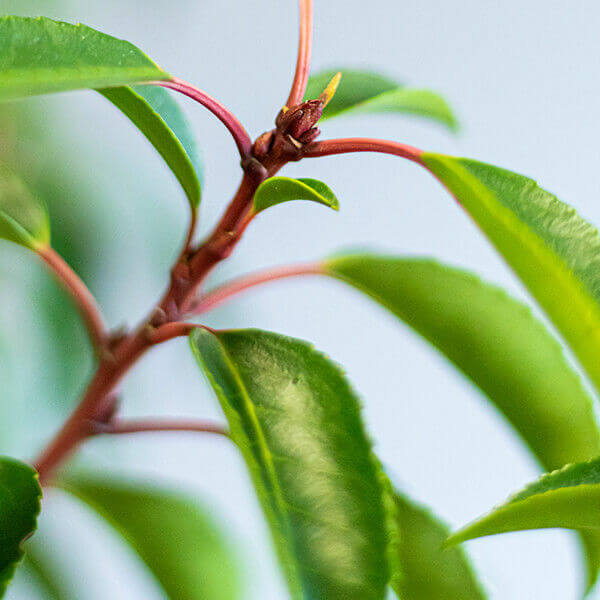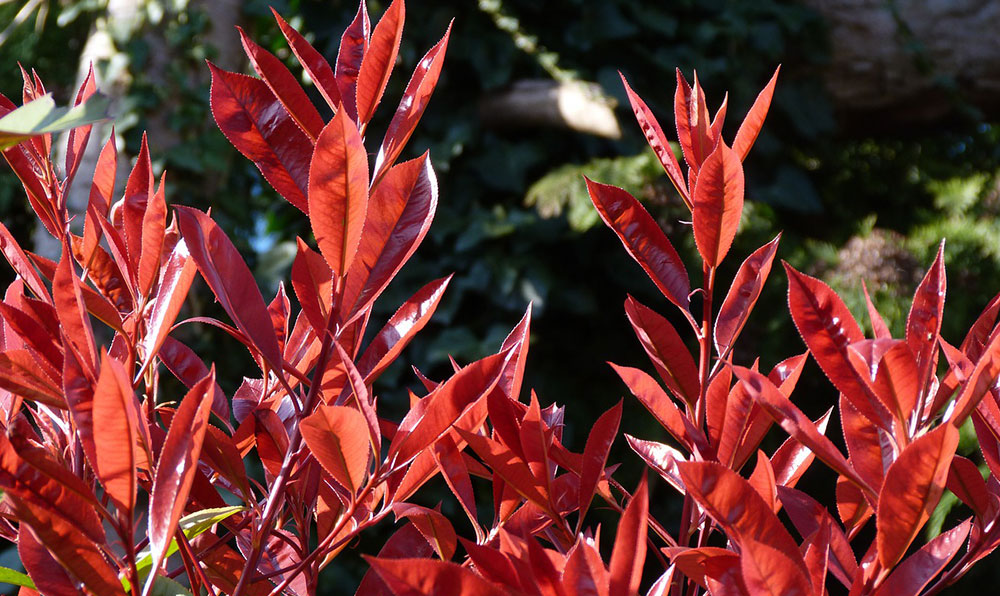Hedge Plants For Privacy Screens
Hedge Plants For Privacy Screens
Blog Article
Best Hedge Plants For Privacy
Enhance your garden's allure with lush hedge ranges such as Yew (Taxus), Thuja, Laurel, Photinia, and Bamboo, celebrated for their structural stability and environmental benefits.
Yew and Thuja supply evergreen protection and winter strength, while Laurel provides rapid growth and broad, aromatic leaves.
Photinia adds seasonal appeal with its vibrant red foliage, and Bamboo provides a low-maintenance, tranquil ambiance.
These hedges improve air quality, minimize sound, and create tranquil, personal areas.
Correct planting, spacing, and maintenance ensure energetic growth and ecological harmony.
Explore how these lavish ranges can elevate your garden's beauty and well-being.
Key Takeaways
Transform Your Garden With Lush Hedge Ranges
- Select Yew for its thick, evergreen growth and exceptional longevity.
- Go with Laurel for its fast growth and broad leaves, making sure quick privacy.
- Pick Photinia for its lively seasonal foliage, which turns a striking dark red.
- Utilize Bamboo for a low-maintenance, winter-hardy hedge with aesthetic appeal.
- Area plants 2-3 per meter and prune frequently for optimum development and health.
Popular Hedge Plants
When changing a garden with lavish hedge ranges, it's vital to think about popular hedge plants such as Yew, Thuja, Laurel, and Photinia due to their special attributes and benefits.
Yew (Taxus) is highly respected for its durability and dense, green growth, making it a prime choice for sustaining landscapes.
Thuja is noted for its evergreen foliage and robust winter durability.
Photinia adds seasonal vibrancy with red leaves that darken gradually, developing vibrant visual appeal.
Laurel uses quick development and fragrant, broad leaves, ideal for quick personal privacy.
In Addition, Bamboo is an excellent option for atmosphere, providing a low-maintenance, winter-hardy option that boosts the garden's visual with its sophisticated, swaying canes.
These selections deal with a variety of horticultural needs and choices.
Benefits of Garden Hedges
Garden hedges offer a multitude of advantages, making them an important addition to any landscape. These natural barriers are cost-efficient to implement and provide considerable wind security, improving air circulation and adding to sound reduction. The dense foliage of hedges like Thuja and Beech guarantees privacy by obstructing exposure, developing a remote and tranquil environment.
Hedges also play a crucial role in microclimate policy, offering a steady environment that cultivates plant growth and lessens temperature level variations. Their elaborate leaf structures filter contaminants, enhancing air quality and contributing to a healthier garden environment.
Moreover, hedges stand out in noise decrease, absorbing and deflecting acoustic waves to lower ambient noise levels. This double performance of supplying both acoustic and visual privacy improves the overall harmony and aesthetic appeal of any garden.
Planting and Upkeep Tips
For an effective hedge, meticulous preparation of the planting location is crucial. Guarantee the soil has correct pH and drainage to support strong root development.
Area the plants properly for the chosen species. Water the hedge frequently throughout its preliminary growth phase, adjusting as required with seasonal changes.
Implement a methodical pest control and illness avoidance method, utilizing chemical or natural treatments when required. Routinely examine for aphids, termites, and fungal infections.
Apply mulch to maintain moisture and reduce weeds. Seasonal pruning promotes dense growth and air blood circulation, important for plant health.
Following these standards will assist you cultivate a dynamic, well-maintained hedge that boosts the appeal of your garden.
Spacing and Cutting Standards
Spacing and Cutting Guidelines
Proper spacing and trimming are essential for cultivating healthy, visually appealing hedges. Sufficient spacing ensures each plant receives enough nutrients, light, and air flow.
Follow these guidelines for optimum hedge upkeep:
- Spacing: Position hedge plants 2-3 plants per meter to motivate robust growth.
- Pruning Strategies: Routine pruning is vital for preserving desired hedge height and shape. Cut new development in summertime and cut back older wood throughout winter.
- Seasonal Care: Change trimming schedules and approaches according to seasonal requirements to ensure plant health.
- Hedge Height: Frequently monitor and cut to maintain the wanted hedge height and achieve consistent visual appeals.
Complying with these steps will guarantee your hedge flourishes, boosting both the appeal and functionality of your garden.
Selecting the Right Hedge
Choosing the Right Hedge
Choosing the appropriate hedge includes examining factors such as mature height, foliage density, and environmental durability. Effective hedge plant selection requires comprehending each species' development qualities and site-specific flexibility.
For example, Yew (Taxus) uses excellent durability and thick development, while Thuja is significant for its winter season durability. Furthermore, thinking about upkeep requirements is important; fast-growing types like Laurel or Privet demand routine cutting, whereas low-maintenance options like Bamboo or Ivy may be more effective for those looking for very little upkeep.
Ecological factors such as soil type, light availability, and wetness conditions ought to likewise direct the choice process. This mindful method ensures the picked hedges will prosper, providing both visual and functional advantages to the garden landscape.
Delivery and Planting Suggestions
To ensure your hedge plants prosper, they need to be provided by specialized couriers and planted without delay upon arrival.
Follow these important actions for effective planting:
- Soil Preparation: Enrich the soil with raw material to enhance drain and nutrient material.
- Planting Depth: Produce a trench twice the width and equal to the depth of the root ball.
- Watering Strategies: Water completely after planting, keeping the soil consistently damp however not saturated.
- Mulching: Use a layer of mulch to retain wetness and reduce weeds.
Customer Assistance and Service
Given the important function of timely support in horticultural pursuits, our consumer assistance team is available six days a week through telephone, email, and social media to provide professional suggestions and promptly resolve any issues. Their devotion to fast action times ensures customer satisfaction by dealing with queries associated with plant health, ideal planting techniques, and maintenance schedules.

Action Time
Six days a week
6 days a week
6 days a week
This comprehensive support system, strengthened by an excellent 9.3/ 10 customer rating, highlights our commitment to improving the gardening experience for every customer.
Regularly Asked Concerns
For How Long Does It Take for Hedge Plants to Establish?
Hedge plants typically need one to three years to end up being fully established, with the specific period differing by species and growing conditions.
Effective care during this vital period is vital for robust growth. Consistent watering, vigilant weed control, and appropriate fertilizer application are pivotal in promoting strong root advancement.
For instance, fast-growing types like Laurel may establish more quickly, while slower-growing varieties such as Yew may take longer. Thorough upkeep accelerates the establishment process, resulting in dense and healthy hedges.
What Are the very best Hedge Plants for Privacy?
The question of the very best hedge plants for personal privacy involves assessing evergreen and deciduous choices.
Evergreen hedges like Thuja, Laurel, and Cypress provide year-round protection, making sure constant personal privacy.
On the other hand, deciduous hedges such as Beech provide seasonal personal privacy, shedding leaves in colder months.
Key upkeep ideas for privacy hedges include routine cutting, fertilizing in spring, and correct spacing-- generally 2 to 3 plants per meter.
In addition, constant watering and thorough weed removal are vital for promoting healthy, thick development.
Can Hedge Plants Bring In Wildlife to My Garden?
Yes, hedge plants can attract wildlife to your garden by supplying necessary advantages like shelter, food, and nesting sites, thereby improving local biodiversity. For circumstances, yew, holly, and laurel are exceptional for bring in birds, while ivy supports a range of bugs.
However, it is very important to note that there are some downsides, such as increased maintenance to handle pests and routine upkeep. Thoroughly picking and maintaining hedge varieties can assist balance these drawbacks and benefits, eventually fostering a sustainable and dynamic environment in your garden.
Are There Any Flowering Hedge Plants Available?
Yes, there are flowering hedge plants available that can boost the beauty of your garden.
For example, Elaeagnus, also called Olive Willow, produces aromatic white flowers in the fall, including a touch of elegance.
Photinia, another popular choice, showcases vibrant red leaves that mature into a rich green, producing a dynamic visual impact throughout the seasons.
To ensure these plants thrive, it's important to practice correct pruning techniques and seasonal maintenance, such as cutting new development in the summer season and cutting down in the winter season.
These steps will assist maintain the health and aesthetic appeal of your flowering hedges.
How Do I Prevent Bugs in My Hedge Plants?
To avoid insects in hedge plants, use natural insect control techniques and keep appropriate hedge care. Present advantageous pests like ladybugs, which take advantage of hazardous bugs, to produce a balanced ecosystem.
Regularly check your hedges for signs of infestation and immediately remove any affected parts to prevent the spread. Guarantee the health of your hedges by applying well balanced fertilizers and offering sufficient water.
Make use of mulching to keep soil moisture and correct spacing to reduce plant tension and promote robust growth. These practices jointly assist in reducing insect issues and keeping a healthy hedge.
Conclusion
In essence, choosing the ideal hedge ranges such as Yew, Thuja, and Laurel can change any garden into a serene haven. These plants provide year-round plant, improve visual appeal, and offer practical advantages like noise reduction and wind security.
Proper planting strategies, accurate spacing, constant watering, and seasonal trimming are important for ideal development.
Trusted delivery services and professional consumer support make sure a smooth experience from purchase to planting, making it easier than ever to raise your outdoor space.
Garden hedges provide a wide Browse this site variety of benefits, making them an important addition to any landscape. These natural barriers are cost-effective to implement and offer substantial wind protection, boosting air circulation and contributing to noise reduction. The dense foliage of hedges like Thuja and Beech makes sure privacy by blocking visibility, producing a serene and secluded environment.

Pruning Techniques: Routine pruning is vital for preserving desired hedge height and shape. Cut new growth in summer season and cut back older wood throughout winter season.
Report this page